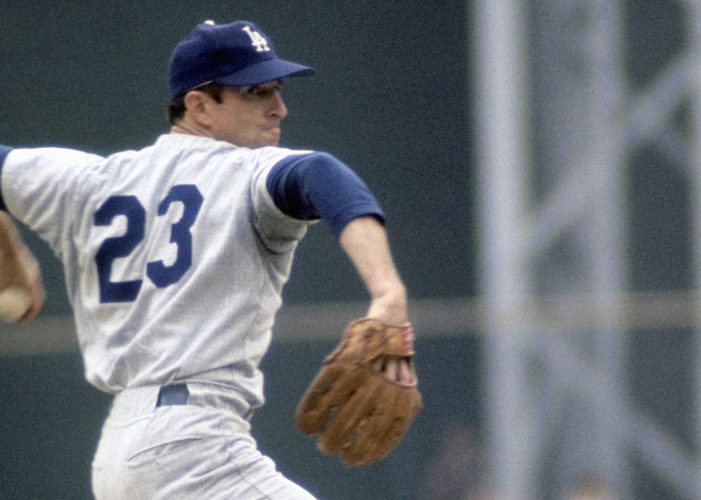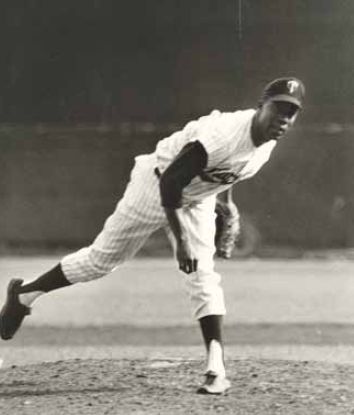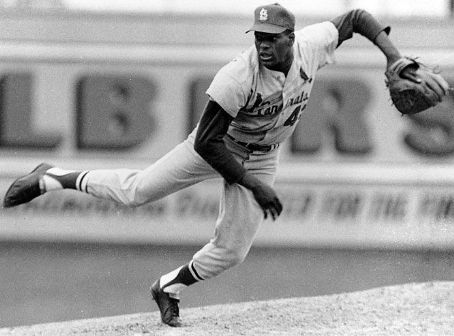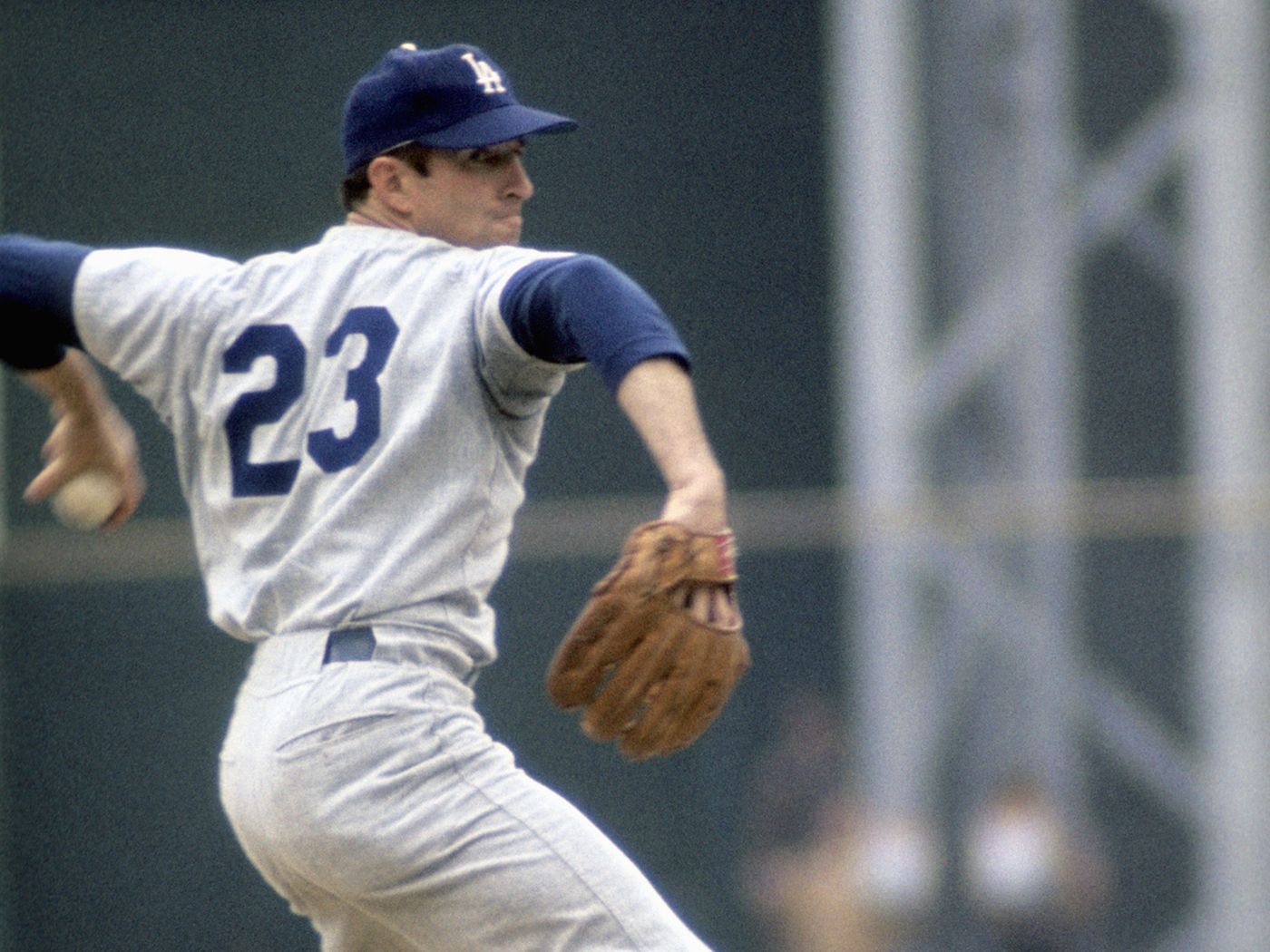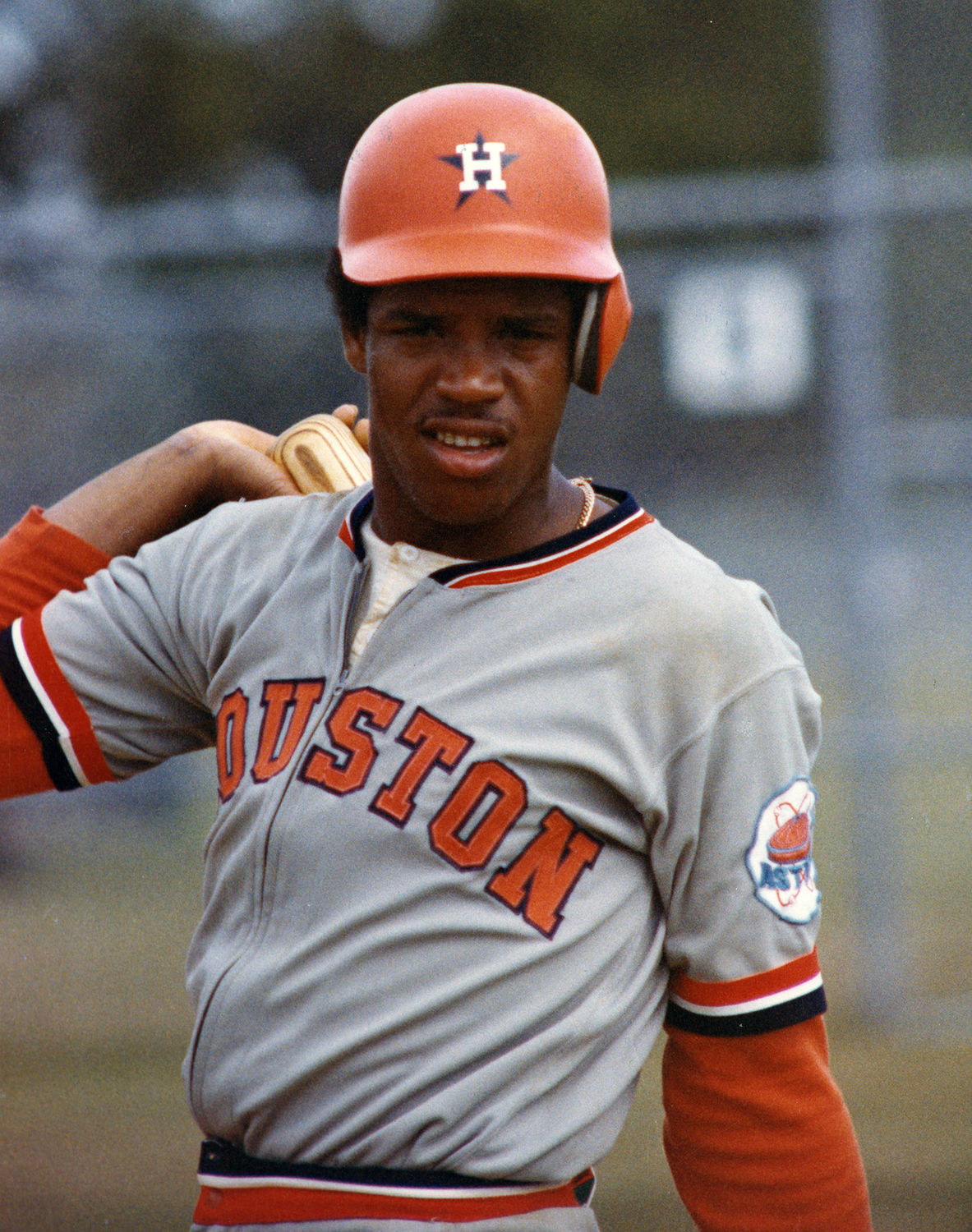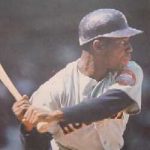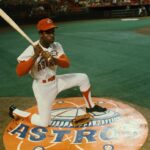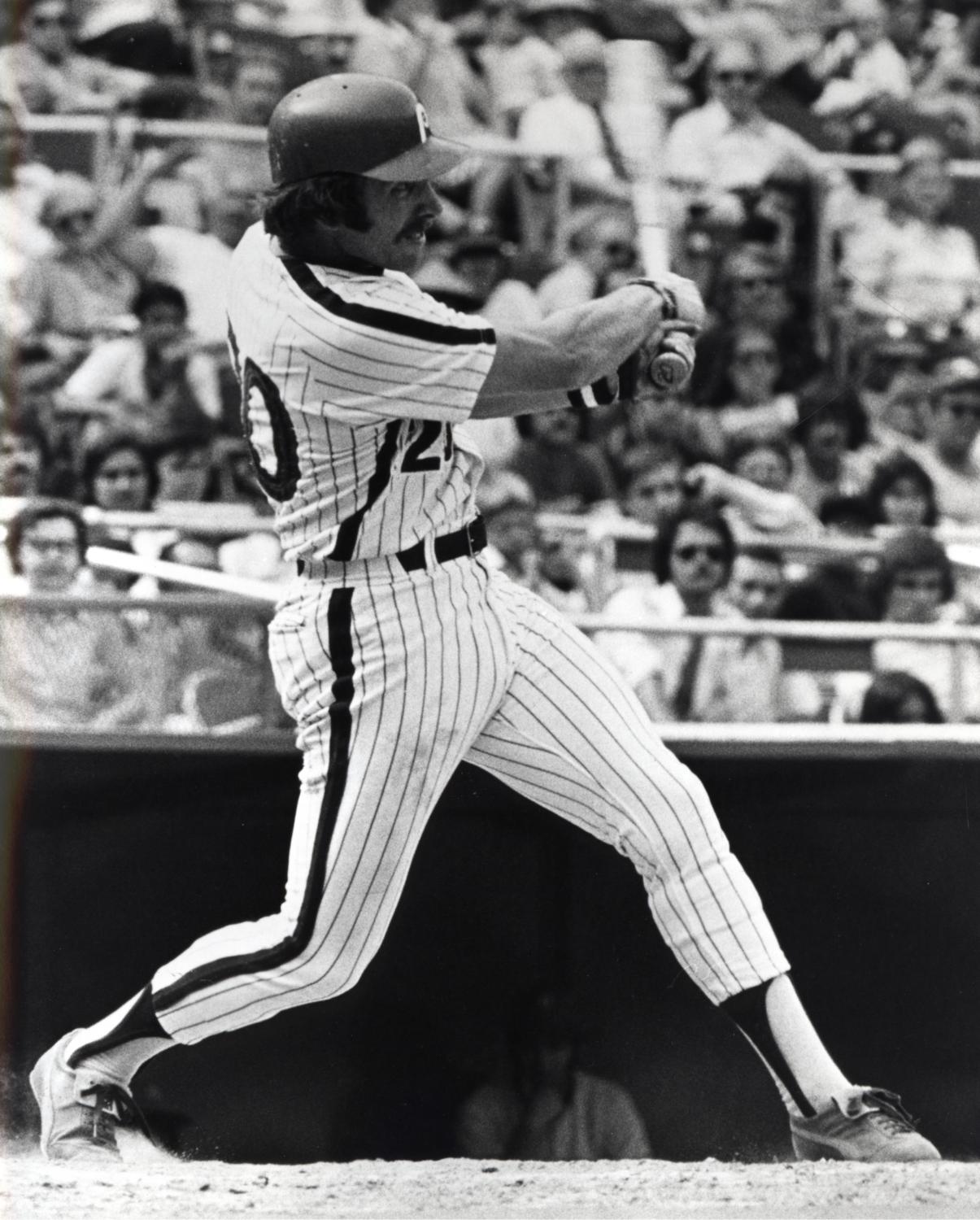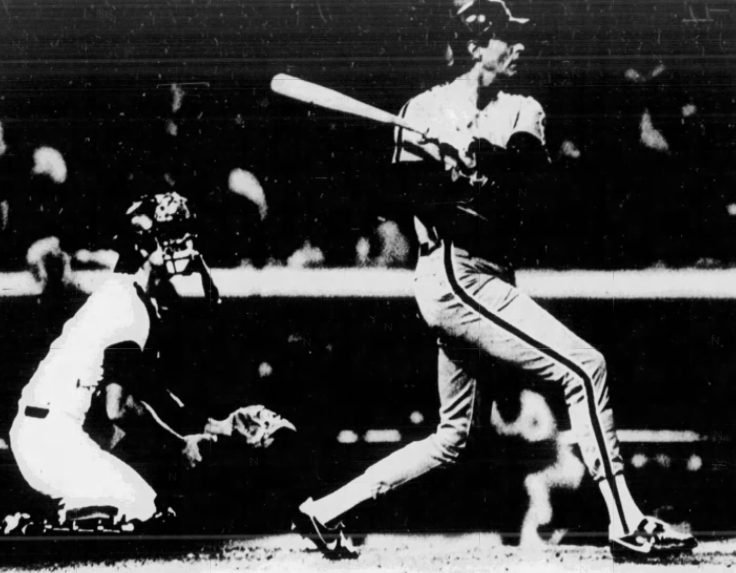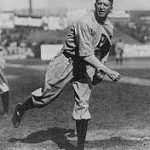Claude Osteen
Position: Pitcher
Bats: Left • Throws: Left
5-11, 160lb (180cm, 72kg)
Born: August 9, 1939 in Caney Springs, TN
High School: Reading HS (Reading, OH)
Debut: July 6, 1957 (11,475th in major league history)
vs. STL 0.2 IP, 2 H, 0 SO, 1 BB, 1 ER
Last Game: September 27, 1975
vs. MIN 4.0 IP, 5 H, 1 SO, 0 BB, 0 ER
Full Name: Claude Wilson Osteen
Nicknames: Gomer
Pronunciation: \oh-STEEN\
View Player Info from the B-R Bullpen
View Player Bio from the SABR BioProject
Nine Other Players Who Debuted in 1957
Johnny Roseboro
Roger Maris
Jim Landis
Claude Osteen
Milt Pappas
Lenny Green
Tony Kubek
Jim Gentile
Juan Pizarro
All-Time Teammate Team
Coming Soon
Notable Events and Chronology for Claude Osteen Career
Biography
One of the slowest workers in the game, Claude Osteen lulled opposing batters (and fans) to sleep with his methodical pitching style. He hurled a shutout in Game Three of the 1965 World Series, and tossed 40 more shutouts in regular-season play. Despite that impressive number of whitewashes, Osteen finished just a shade over .500 for his 18-year career, at 196-195. He won at least 10 games in ten straight seasons and reached 15 victories eight times. Nicknamed “Gomer” because of his resemblance to Gomer Pyle
Biographical Information
Osteen was signed by the Cincinnati Reds and pitched in the majors in 1957 while he was still 17 years old. He appeared in 3 games and had a 2.25 ERA. In spite of that, he didn’t come back until he was 19, and was not successful in cups of coffee in either 1960 or 1961. The Reds of 1961 were a miracle team, winning the pennant after finishing 6th the previous year, but Osteen only had one appearance with them and was traded to the Senators in September. The 1961 Reds were a team full of young pitchers (among them, Jim O’Toole, 24, Joey Jay, 25, Jim Maloney, 21, and Ken Hunt, 22), so Osteen was expendable.
Osteen became a starter for the last-place Washington Senators in 1962. Although he had initially come up 5 years earlier, he was still only 22 years old. While his winning percentages were not impressive, his ERA’s were below the league average in both 1962 and 1963. In 1964 he went 15-13 on a team that lost 100 games, and the Dodgers traded Frank Howard to get him. Howard, who was 27 in 1964, had come off an unimpressive season but was to go on with the Senators to lead the league twice in home runs.
Osteen joined the Los Angeles Dodgers for the 1965 season when they won the World Series. Osteen’s regular-season record was only 15-15, but he pitched well in the World Series, giving up only one earned run in 14 innings against the Minnesota Twins.
Osteen also appeared in the 1966 World Series with the Dodgers, giving up one earned run in 7 innings against the Baltimore Orioles, but ending up on the wrong end of a 1-0 loss.
He was a heavily used starter for 9 years with the Dodgers, typically starting close to 40 games each year, and both winning and losing in double figures.
In the 1970 All-Star Game. Osteen pitched five shutout innings and won the 1970 game. A game remembered most by Pete Rose’s barreling into Ray Fosse to score the winning run in the 12th inning. Coincidentally, like Osteen, the pitcher and hitter involved in the walk off single were also Tennessee natives: Jim Hickman (a Dodger teammate of Osteen’s in 1967) collected the hit off losing pitcher Clyde Wright (coincidentally, Hickman and Wright would become Comeback Players of the Year in their respective leagues).
In 1972 he went 20-11, but it was more typical to see him go 16-14, which he did in 1970. Osteen had an incredibly strong year in 1972 finishing with 7 complete-game victories in his last 9 starts. That year, he was 20-11 with a 2.64 ERA in 252 innings pitched.
He made his 3rd and final All-Star team in 1973, in his last real quality season, and his last season with the Dodgers. That year, he went 16-11 and had a 3.31 ERA with a 2nd-place Dodger team. In his 33 starts on the season, he had 12 complete games and 3 shutouts. He had won in double figures each year from 1964-1973.
He was a consistent arm in the rotation at a time when the Dodger team changed significantly. He joined the Dodgers a year before Sandy Koufax retired and a year before Don Sutton came up as a rookie. He continued with them after Don Drysdale retired, and was still a starting pitcher when youngsters such as Steve Garvey, Ron Cey, Bill Buckner, and Davey Lopes joined the team. He outlasted Maury Wills, who had been traded from the Dodgers after the 1966 season, came back in 1969, and retired after the 1972 season.
Finally, after the 1973 season, the Dodgers traded Osteen for Jimmy Wynn, who was probably the real MVP on the 1974 Dodgers rather than Garvey, who won the award. Osteen pitched most of a season for Houston in 1974, was traded to St. Louis in August, and finished up with the Chicago White Sox in 1975, a team that featured two other veteran workhorse pitchers – Wilbur Wood and Jim Kaat.
Osteen, like several other Dodger pitchers of the 1960’s, was a pretty good hitter, with a .188 lifetime average. When he won 20 games in 1972, he also hit .273.
Never a factor in Cy Young Award voting, he was nevertheless a three-time All-Star. He finished up with 196 victories and 195 losses, and a 3.30 lifetime ERA during what was largely a pitcher’s era. The most similar pitcher, according to the “similarity scores” method, was Curt Simmons, a National League contemporary of Osteen who also appeared in 3 All Star games but never figured in the Cy Young Award voting either.
Matchup BigData
It would be hard for any batter to have more success against a pitcher than Orlando Cepeda enjoyed against Osteen. The future Hall of Fame slugger hit .478 (32-for-67) with six homers and a .821 SLG percentage against the southpaw… Hank Aaron belted 14 homers off Osteen in 126 career at-bats… On the other hand, Willie Mays hit just .252 (26-for-103) against Osteen, though he did slug five homers and was walked 17 times… Osteen baffled left-handed slugger Willie McCovey, holding him to 10-for-67 (.149) with four homers.
After Osteen retired as a player, he became a fixture around the league as a pitching coach for the Dodgers and several other teams.
@ET-DC@eyJkeW5hbWljIjp0cnVlLCJjb250ZW50IjoicG9zdF90YWdzIiwic2V0dGluZ3MiOnsiYmVmb3JlIjoiTGVhcm4gTW9yZSBhYm91dCB0aGUgdGVhbXMsIHBsYXllcnMsIGJhbGwgcGFya3MgYW5kIGV2ZW50cyB0aGF0IGhhcHBlbmVkIG9uIHRoaXMgZGF0ZSBpbiBoaXN0b3J5IC0gLSAtIC0gLSAtIC0gIiwiYWZ0ZXIiOiIiLCJsaW5rX3RvX3Rlcm1fcGFnZSI6Im9uIiwic2VwYXJhdG9yIjoiIHwgIiwiY2F0ZWdvcnlfdHlwZSI6InBvc3RfdGFnIn19@
Factoids, Quotes, Milestones and Odd Facts
Coming soon
Other Resources & Links

